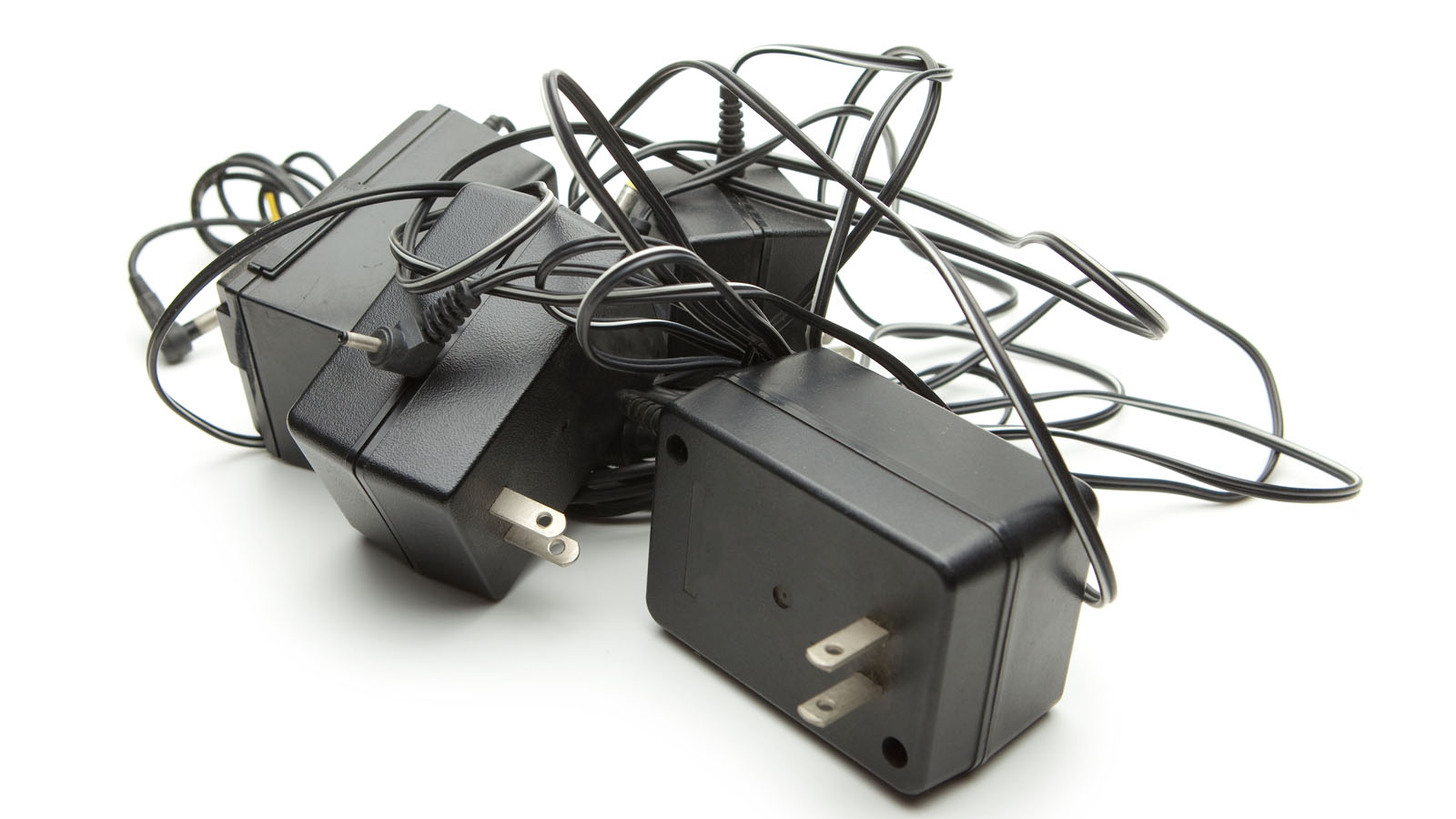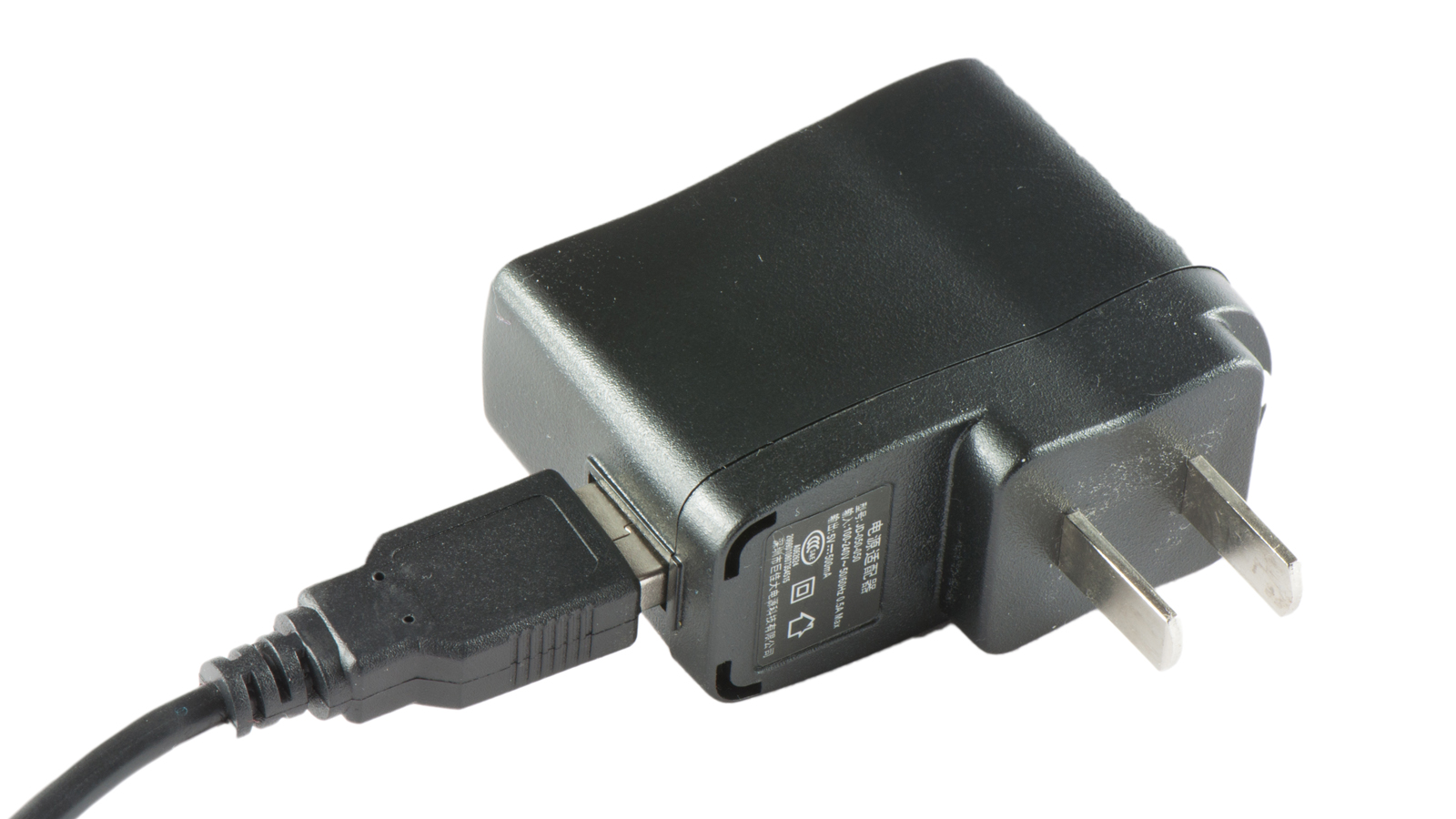The mobile computing revolution may have freed us from wall sockets, but only for as long as our batteries last. And with a charger for every gadget, there’s now a menagerie of wall warts and power cords clustered around your power outlets. Here’s how to clear out the electronic rat nest and recharge most of your gadgets using just a few cords.
While you might think that all miniUSB cables are created equal, just because a charger fits your device doesn’t mean you should use it. Different smartphones and tablets have different volt requirements; too many volts from the charger and the gadget fries, too few and the device will take forever to charge.
A recent example? While an iPhone 3GS and an iPad 3 share a 30-pin connector, their chargers output at entirely different rates. Mixing and matching won’t be ruinous, but it can lead to frustration.

Match the Voltage
It’s the same premise as holds for household fuse systems. Putting a 20Amp fuse in a 15Amp circuit will fry anything plugged into it, and putting a 15Amp fuse in a 20Amp circuit will blow fuses one after the other because they aren’t designed to handle that amount of electrical load. It’s only when the amount match does everything work as it should.
This used to be a much bigger issue on account of the wide variety of proprietary charging units and pin connectors that came with each device. Thankfully, the advent of USB changed all that and has provided an easy, standardised platform for charging devices. All USB cords carry the same 5V, regardless of if it’s got a 30-pin head or a microUSB plug, whether it’s first-party or third-party. That means DC chargers are now brand agnostic; if the volts, amps and connectors are compatible, an Apple wall wart can charge an HTC just as easily as a Samsung. That if, though, is where people run into trouble.
Because they have consistent, standardised voltage, USB chargers need another means of putting more power (in terms of watts) into larger gadgets faster. To do so, the system will increase the current (measured in amps). Most USB cables designed exclusively for charging (as opposed to data transfer) limit the current to between 1 amps and 1.5 amps, although new iPad chargers can deliver 2.1 amps, and a standard USB port on your laptop only puts out .5 amps. This is why a 1-amp charger isn’t effective on a 2.1-amp iPad. The device consumes power at the same rate that it’s added.
In addition to the volts and amps, the third metric to keep an eye on is frequency. In North America everything runs at 60Hz, while Australia runs at 50Hz. Luckily, most modern electronics contain integrated converters that allow the device to work on both frequencies, as well as to flip between the 120V used in North America and the 220V-240V used in Australia. Check the tiny writing on the back of both the charger and device to ensure it reads something like this: “Input 100 — 240V ~ 200mA 50 — 60 Hz.” And while you’re staring at that label, make sure the voltages and amps dovetail as well.
How Smart Chargers Work
If all that sounds too complicated, the good news is that at least the charger you’re using to power your phone or tablet likely knows exactly what it’s doing. Smart chargers are those that utilise a small CMOS chip to monitor and manage the state of charge (SoC) and state of health (SoH) of similarly equipped batteries. This is a de facto feature on most every modern secondary battery on the market, and it’s ubiquitous among Li-ion systems. This feature allows the batteries to be left unattended when charging without the fear of having them overheat and explode, and while maintaining 100 per cent capacity over long periods via a trickle charge.

The process for charging these batteries typically occurs in three stages. The first stage, known as the bulk charge, dumps a large amount of voltage and amperage into battery. Since the battery is mostly empty, there’s little danger of it overheating. The natural absorption rate of the battery, the maximum voltage and amperage it can take without overheating, is often attained at this stage. For the 12V batteries that power iPads, that rate will be 14.6-14.8 volts. The charger measures the remaining voltage and resistance levels before applying current. Once the battery fills to 80 per cent capacity, the charger will drop the amps but maintain the incoming voltage for the second stage, absorption.
This allows the battery to reach near full capacity without overheating, however the current continually drops as the battery fills, meaning that the last 20 per cent always requires a significantly longer amount of time than the first 20 per cent. The final stage, around 85 per cent to 95 per cent capacity, is known as the Float, and is a slow trickle charge meant only to ensure the capacity is maintained, not added to.
Make the Connection
Once you’re sure that your device’s needs line up with your charger’s output, all that’s left is ensuring your USB cords are equipped with the proper pin connector. The micro-USB to USB cord that came with your last phone works just as well with your new one and can plug into any suitable USB power brick, so why do you have multiples of it — each with its own brick?
Instead, just stash a single spare brick in your bag, bring only the cords you need, and stagger your device charging so that one is always plugged into a port on your computer.
TL;DR? While you can use the same charger for multiple devices, you probably shouldn’t. Not unless you want to ruin your gear or wait a lifetime for it to recharge.
[Battery Stuff, Wise Geek, Apple, iLounge]
Pictures: Olga Popova/Shutterstock, showice/Shutterstock, optimarc/Shutterstock
